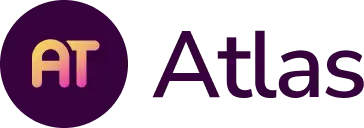As you map your curriculum for your CTE programs, courses, and units, consider these steps grounded in a backward design framework. These steps should be engaged in with fluidity and flexibility in mind, considering the spirit of the strategy: planning with the end in mind.
 Source Standards
Source Standards
 Articulate Content & Vocabulary
Articulate Content & Vocabulary
 Craft Enduring Understandings & Essential Questions
Craft Enduring Understandings & Essential Questions
 Add CTE Skills & Learning Targets
Add CTE Skills & Learning Targets
The Progression Through Courses
Successful CTE programs of study begin with broader, exploratory courses and progressively narrow in scope. Consider how the earlier courses equip students for a broad range of 21st century skills, preparing them for both progression through the CTE program and also for a variety of career pathways. As your team drafts the desired outcomes of each course and unit, utilize the reporting features in Atlas to review the progression of focus standards, content & vocabulary, enduring understandings, essential questions, and CTE skills from course to course, unit to unit.
As your team drafts the desired outcomes of each course and unit, utilize the reporting features in Atlas to review the progression of focus standards, content & vocabulary, enduring understandings, essential questions, and CTE skills from course to course, unit to unit.
Assessment Evidence & Learning Plans
Stages 2 & 3 of a traditional backward design framework include planning assessments and learning plans. Some programs find value in the articulation of these elements, but many empower their professional learning communities and individual teachers to create and execute these. Regardless of how uniform or documented these components are in your program, here are some key considerations. Once the initial mapping of your CTE programs is complete, the next step is to look to the future to consider a cycle of curriculum review. The strongest review cycles support long-term goals and are data-driven. Implementing a strong review process will support the work done to map out the curriculum in the first place and help meet your curricular goals, both short and long-term.
Once the initial mapping of your CTE programs is complete, the next step is to look to the future to consider a cycle of curriculum review. The strongest review cycles support long-term goals and are data-driven. Implementing a strong review process will support the work done to map out the curriculum in the first place and help meet your curricular goals, both short and long-term.

